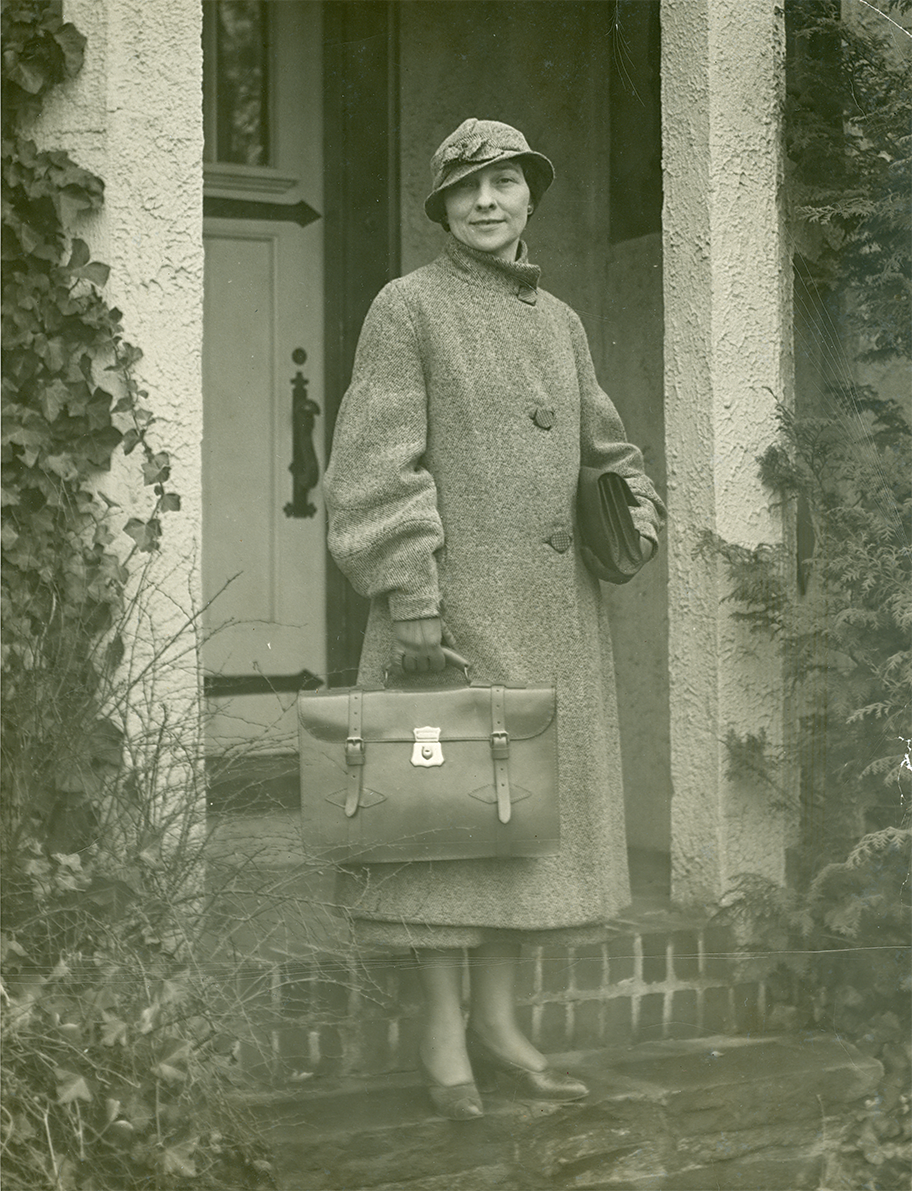A place of seeming calm in the middle of a global storm was an upscale establishment on New York’s Madison Avenue. Velvalee Dickinson’s shop specialized in dolls for collectors and sold dolls from all over the world to well-to-do customers all over the country. But unknown to those doll collectors, or to passersby, was that something sinister was going on behind the shop window — something that put the country — and some customers — at risk.
And that sinister activity was eventually uncovered with the help of another woman, one of America’s foremost codebreakers, who helped solve the bizarre mystery the FBI has called “The Case of the Treasonous Dolls.”

Velvalee Dickinson and her husband moved from the West Coast to New York in the late 1930s. In San Francisco and New York, she had been enamored of Japanese culture and had close ties with Japanese officials. Shortly before the attack on Pearl Harbor in December 1941, she received payment from Japanese sources to keep her eyes and ears open for them.
In January 1942 — less than two months after Pearl Harbor and just weeks before Executive Order 9066 triggered the round-up and incarceration of Japanese Americans on the West Coast — a suspicious letter came to the attention of American censors. Addressed to a woman in Argentina and postmarked in Seattle, the letter appeared to be about dolls. It read in part, “The only three dolls I have are three love(ly) [sic] Irish dolls. One of these dolls is an old fisherman with a net over his back, another is an old woman with wood on her back and a third is a little boy.”
In the next few months, other letters also surfaced, returned as not deliverable. They too contained descriptions of broken dolls. They were baffling at first, but examining authorities began to suspect they were coded messages meant for an agent in South America. The dolls referred to might be damaged ships — some victims of the Pearl Harbor attack. The coded words were intended to keep the Japanese up-to-date on ship repairs at places like San Francisco’s Mare Island and Puget Sound’s Bremerton shipyard. For example, “The old Fisherman with a net over his back” was thought to refer to a wooden-decked aircraft carrier and to anti-submarine nets.
Another doll letter from May 1942 sent from Portland said “I just secured a lovely Siamese Temple Dancer, it had been damaged, that is tore in the middle. But it is now repaired and I like it very much. I could not get a mate for this Siam dancer, so I am redressing just a small plain ordinary doll into a second Siam doll ... ” The FBI interpreted that passage as referring to the torpedo-damaged aircraft carrier the U.S.S. Saratoga, just repaired at Bremerton.
A few more facts were turned up by the FBI. All the signatories of the letters were customers of Dickinson’s doll shop in New York. None had actually written or sent the weird letters or knew anything about them. The letters were found to have been typed by the same hand, some on typewriters in hotels where Dickinson had stayed on trips to the West Coast, supposedly to buy and sell dolls. The clues traced back to her.

An expert was brought in to review the letters. Elizabeth Smith Friedman is now considered America’s first female cryptanalyst. Working with her husband, also a cryptanalyst, she broke codes for the U.S. Navy during WWI and the U.S. Army after the war. By the 1920s she worked for the U.S. Coast Guard decoding rumrunner messages during Prohibition. Working for the Coast Guard, she helped break up some bootlegging networks, including Al Capone’s. In the late 1930s, she provided evidence that helped bring down a guns-for-opium ring in Vancouver, B.C. During WWII she shifted to decoding messages between the Nazis and a South American spy ring. So no one was better situated to evaluate the evidence of the doll letters.

When Dickinson was arrested on January 21, 1944, and charged with violating censorship rules and later of committing espionage, Elizabeth Friedman was asked to weigh in with her expert opinion. The letters were using “jargon code,” she concluded, using common words instead of numbers or symbols. In short, Dickinson was spying for the enemy.
Dickinson did not go quietly. She physically resisted arrest by fighting agents in a vault at her New York bank, where authorities seized $13,000 in cash. Nearly a quarter of a million in today’s dollars, the cash was traced to Japanese diplomats. Dickinson said her husband, who had died in 1943, was behind the whole scheme, but admitted she authored the letters and gathered information at strategic sites. The code, she said, was provided by the Japanese naval attaché in Washington, D.C. She said most of the information came from talking with ordinary people in the vicinity of a shipyard, an admission that validated the wartime admonition “Loose lips sink ships.”
Fortunately, because the letters were intercepted, the loose talk did little or no actual harm. The espionage charge was dropped, and in 1944 she pled guilty to violating censorship rules and agreed to talk about her methods. She was given the maximum sentence of 10 years and a $10,000 fine. The court said, “Any help given to the enemy means the death of American boys who are fighting for our national security. You, as a natural-born citizen, having a university education, and selling out to the Japanese, were certainly engaged in espionage.”
We should point out that none of this was the fault of the dolls, only the woman behind them.


